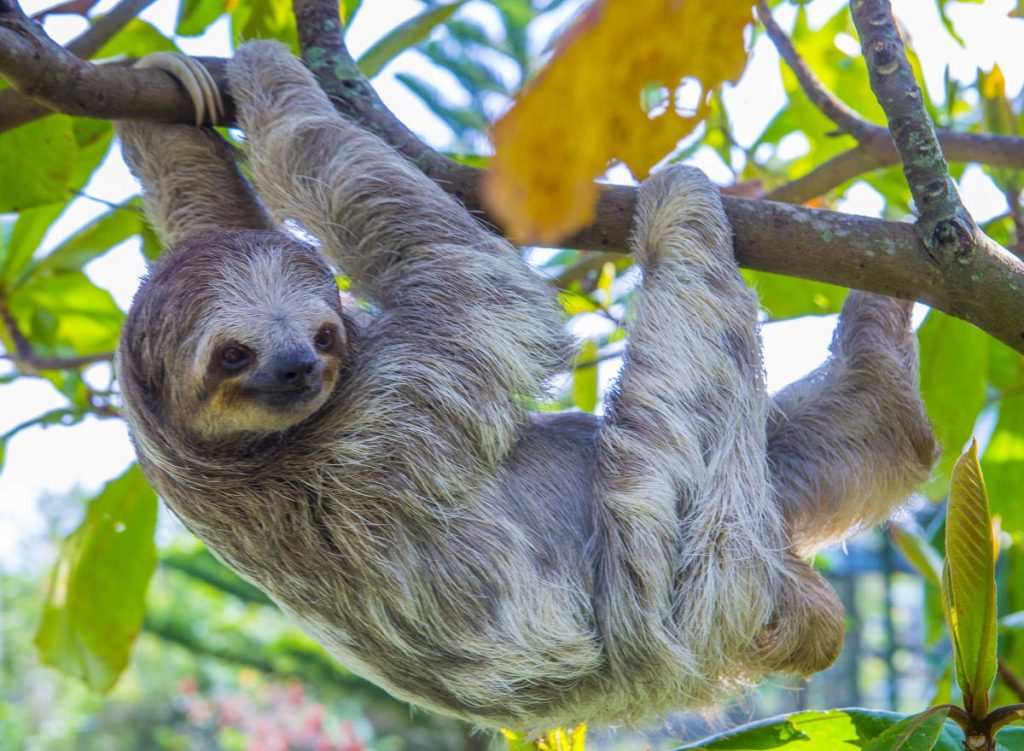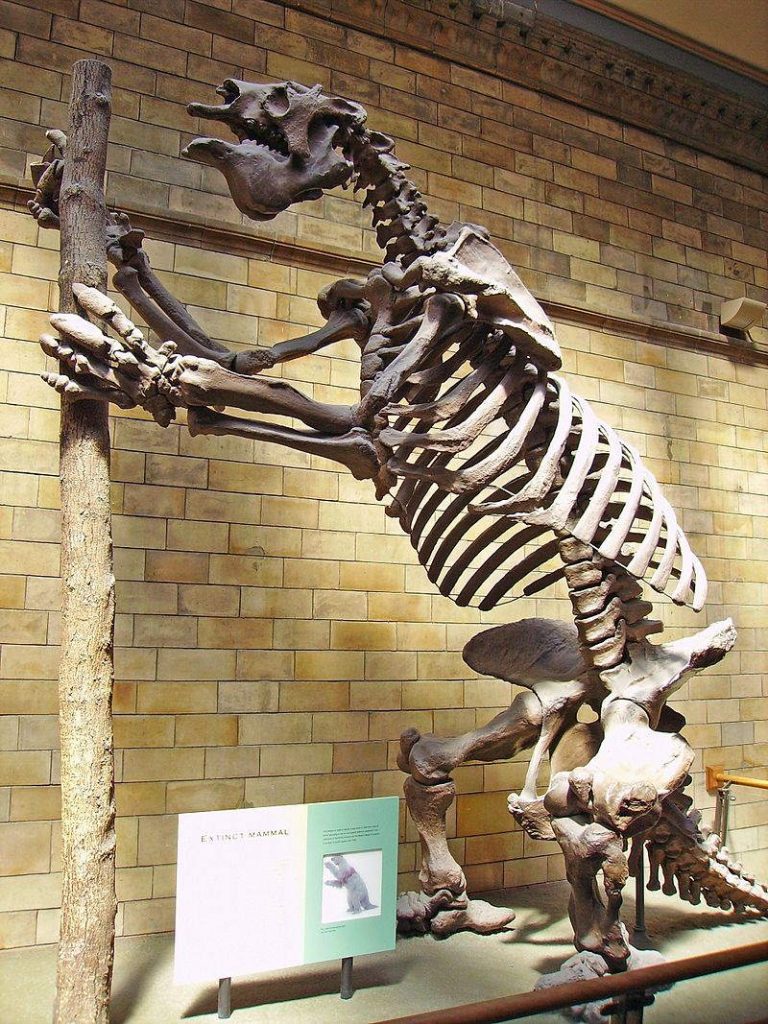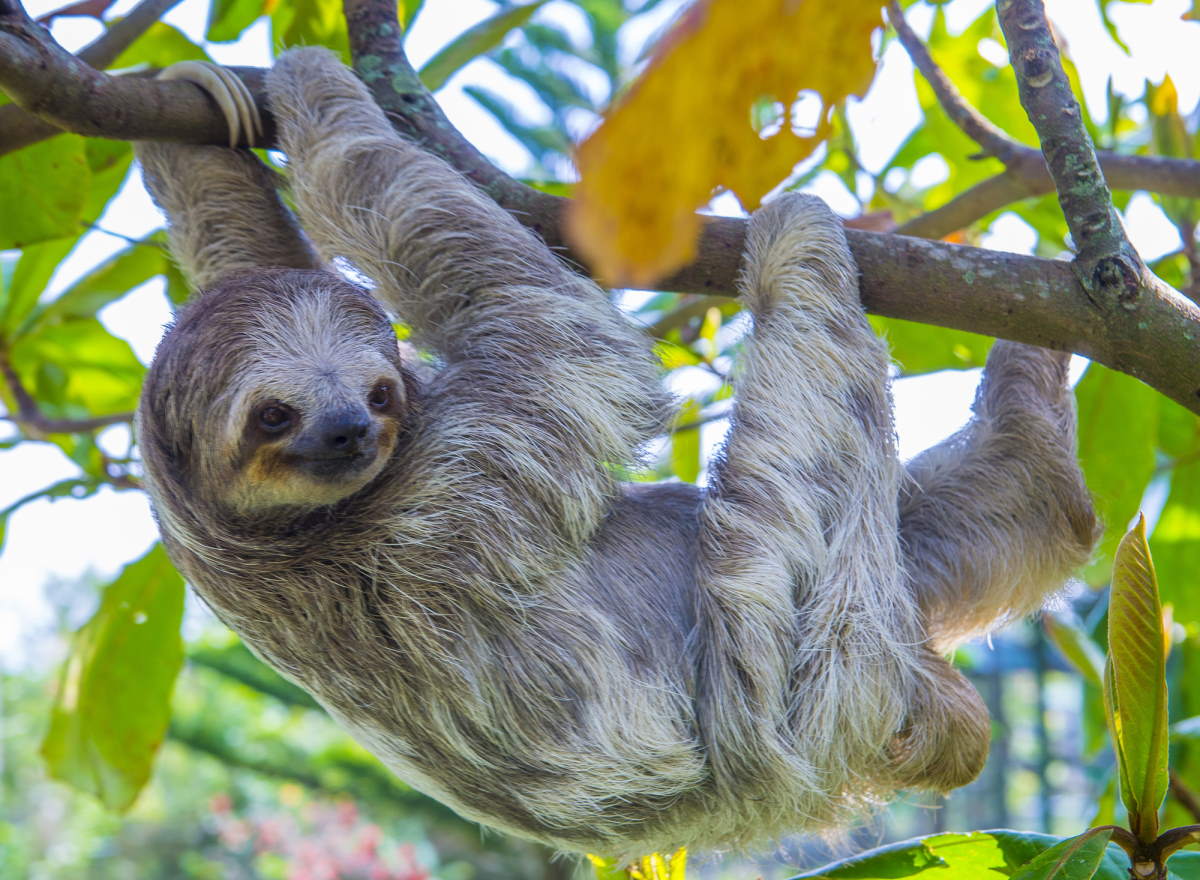Sloths are sluggish tree-dweller mammals of the rainforests of Central and South America. They are famous for their languid movements. Sloths spend most of their time hanging upside down in the tree branches and munching on leaves, twigs, and buds.
They are 60 to 80 cm (24 to 31 inches) long and weigh from 3.6 to 7.7 kg (7.9 to 17.0 lb).
Here are 10 amazing facts about sloths.
1. Sloths have a very low metabolic rate
Sloths generally eat tree leaves and insects. As a result, the energy they get from food is insufficient compared to other mammals of about the same size. So they have a very low metabolic rate.
They move very little and expend very little energy. In addition, their body temperature (average 32ºC) is relatively low, so they do not spend much energy maintaining their body temperature.
One advantage of their slowness is that they avoid detection by predatory hawks and cats that hunt by sight.
2. They have a fairly large stomach
The main source of nutrition for these creatures is cellulose. Due to the fact that their stomachs consist of a large number of sections, they can digest the cellulose in the foods they consume. The process of digestion of sloths takes a very long time (a month or more!).
As much as 2/3 of a well-fed sloth’s body weight consists of the contents of its stomach. Thanks to this large stomach, they can digest their food to the fullest without wasting any of the nutrients they consume.
3. They sleep a lot
Because of their exceptionally low metabolic rate, sloths sleep 15 to 20 hours per day. By living in trees, they learned to sleep by hanging upside down.
4. They descend to the ground only to change trees and discharge
Sloths are tree-dwellers. The trees provide natural protection from predators. They come down only about once a week to change trees, discharge, find more food, or mate.

5. There are two types of sloths
There are two types of sloths: two-toed, and three-toed.
Two-toed sloths are omnivorous, with a diverse diet of insects, carrion, fruits, leaves, and small lizards, ranging over up to 140 hectares (350 acres).
Three-toed sloths, on the other hand, are almost entirely herbivorous (plant eaters), with a limited diet of leaves from only a few trees. No other mammal digests its food as slowly as three-toed sloths.
Two-toed sloths are slightly larger than three-toed sloths.

Related: 10 Amazing Koala Facts
6. Moths live in the fur of sloths
Moths lay their eggs on the sloth’s feces/excrement, providing food for the larvae. When the larvae become moths again, they fly into the fur of sloths in the treetops and find a home and a mate for themselves. So, what is the benefit of a sloth from this situation?
It was determined that there is a relationship between the number of moths and algae in the hair of sloths and the amount of nitrogen. The nitrogen released as a result of the decomposition of dead moths in the fur of sloths by fungi may increase the amount of algae.
Thus, sloths are indistinguishable from the trees on which they live, making them difficult to spot by predators.
7. They are amazing swimmers!
Sloths can swim in the water at three times the speed that they crawl on land. They have extra cervical vertebrae. This allows them to keep their heads above the water while swimming. They can also hold their breath for 40 minutes!
8. Voice of love
When female sloths get into the heat, they scream loudly to attract males. Mating is the only thing that sloths can do quickly!
The gestation period is six-month. The puppies that are born continue their lives by hugging their mothers until they are about five or six months old. This is an important bonding period that helps the offspring learn and develop.
9. They are considered to be most closely related to anteaters
Their most close living relatives are anteaters. Together, they make up the xenarthran order Pilosa (the name Pilosa comes from the Latin word for “hairy”).
10. There were elephant-sized sloths in prehistoric times
There were giant (elephant-sized!) sloths roaming on Earth in prehistoric times. Megatherium americanum, also called giant ground sloth lived about 28 million years ago. One of the largest land mammals known to have existed, giant ground sloths were weighing up to 4 tonnes and were measuring up to 6 meters (20 feet) in length from head to tail!
These giant sloths were eating plants and fruits, like today’s counterparts.

Sources
- “Why are sloths slow? And six other sloth facts” on the World Wide Fund for Nature (WWF) website
- Sloth on Wikipedia
- Sloth Facts: 10 Amazing things about these adorable mammals - August 12, 2022
- 10 Amazing Koala Facts - February 18, 2022
- 10 Amazing Humpback Whale Facts - December 22, 2021
